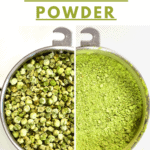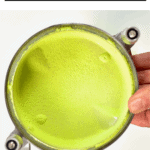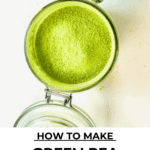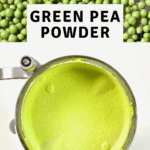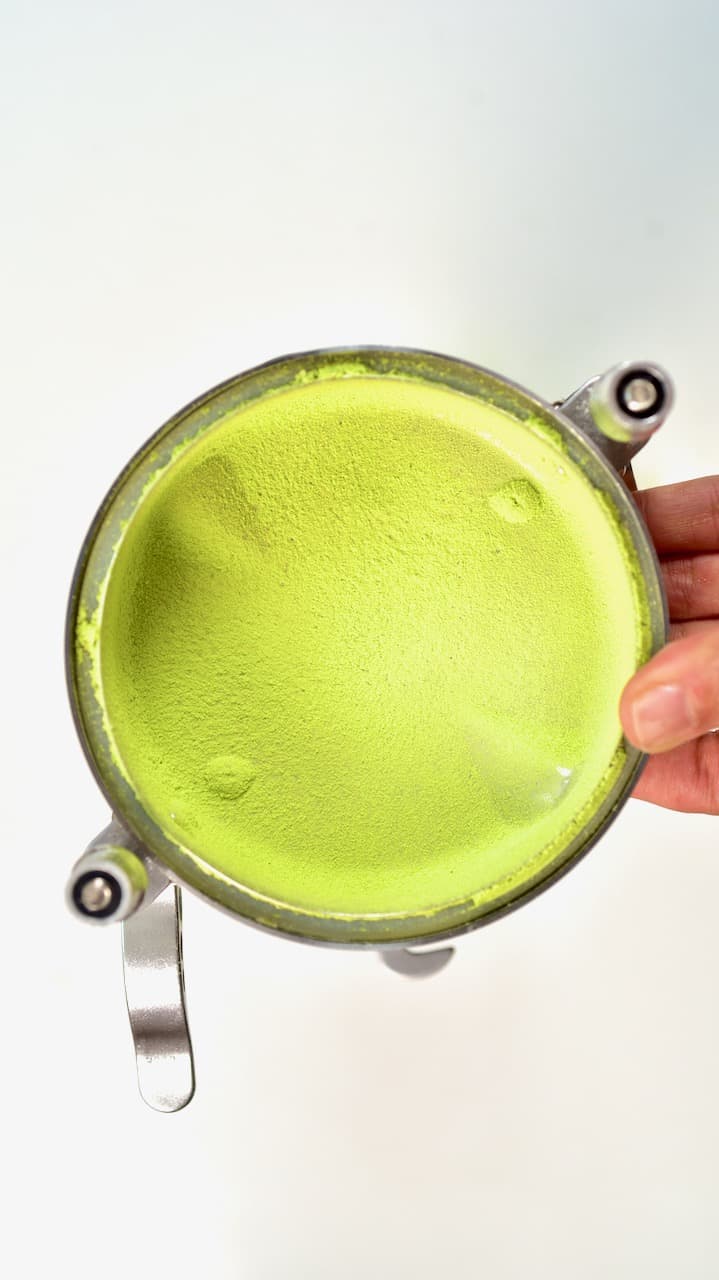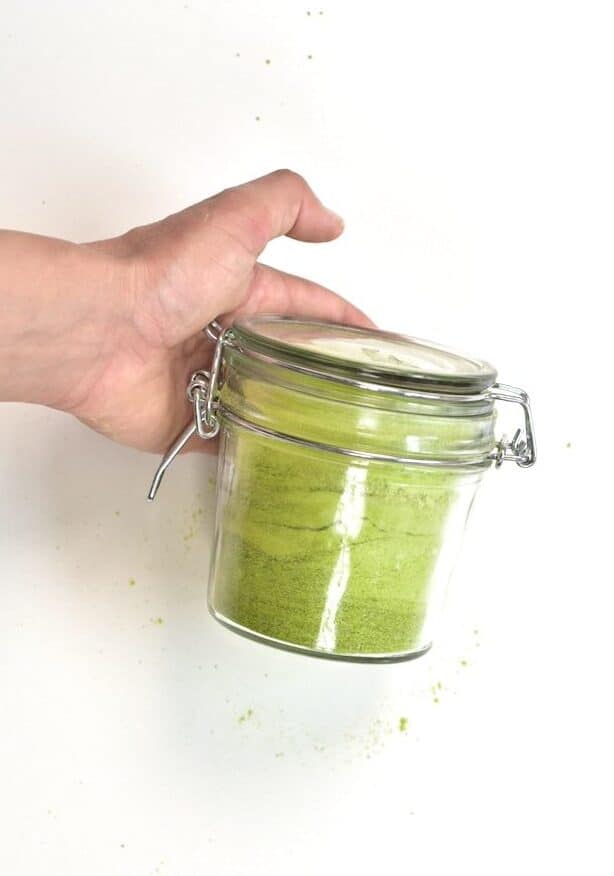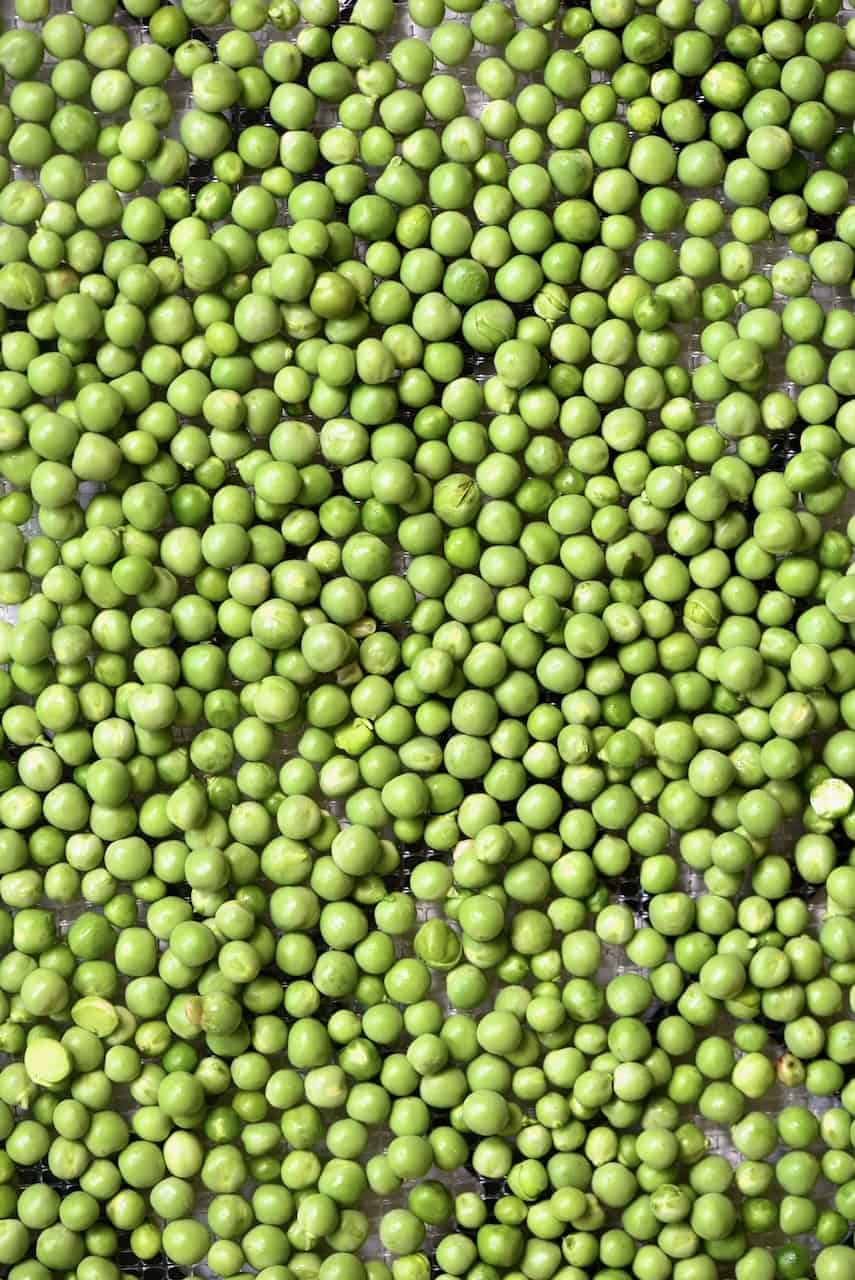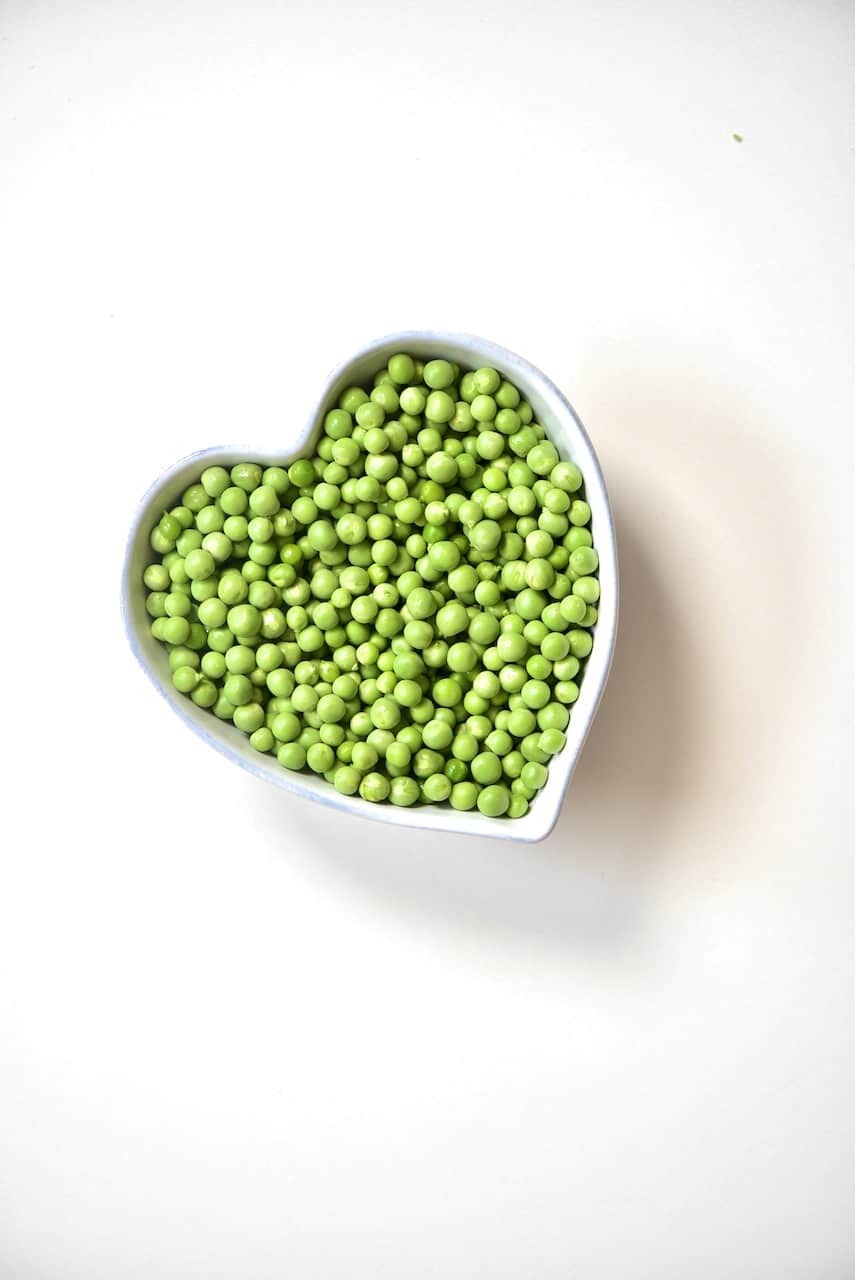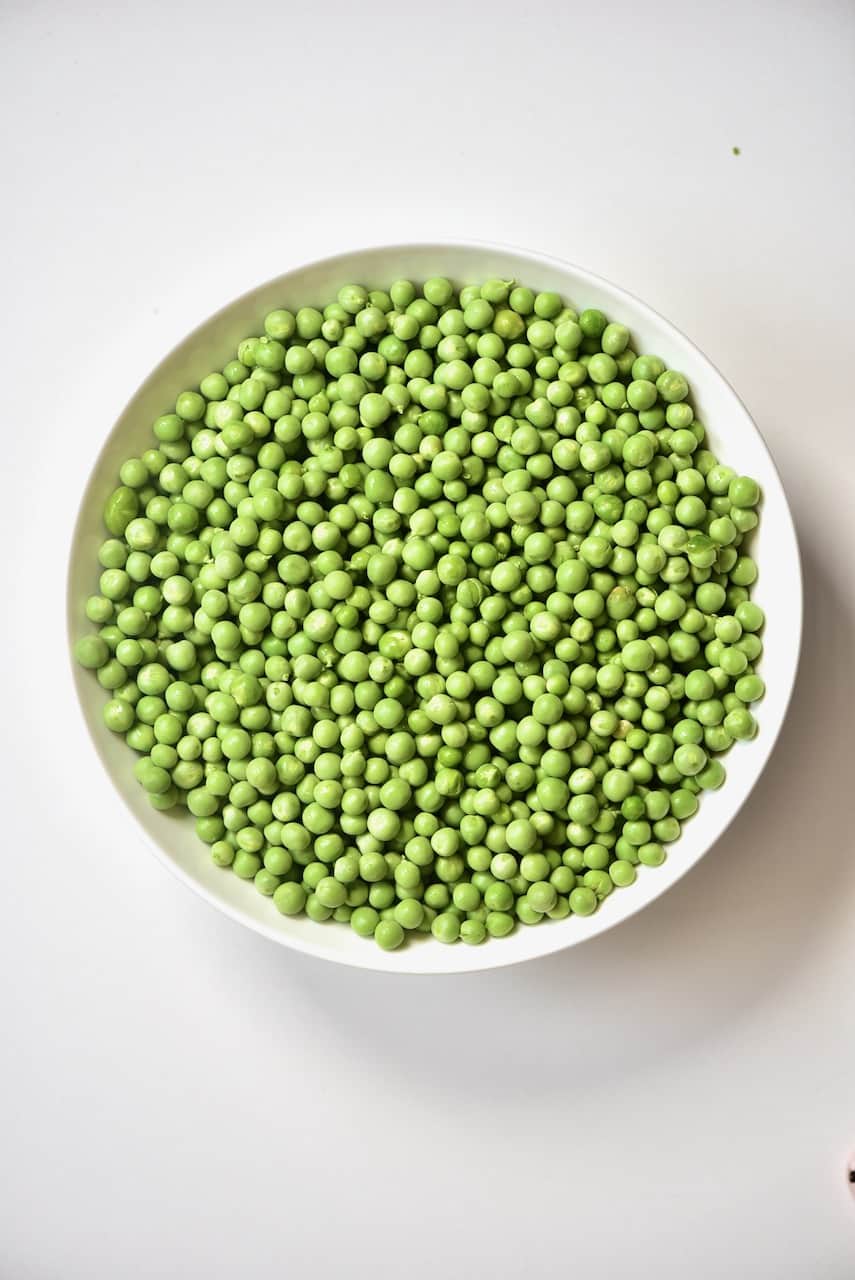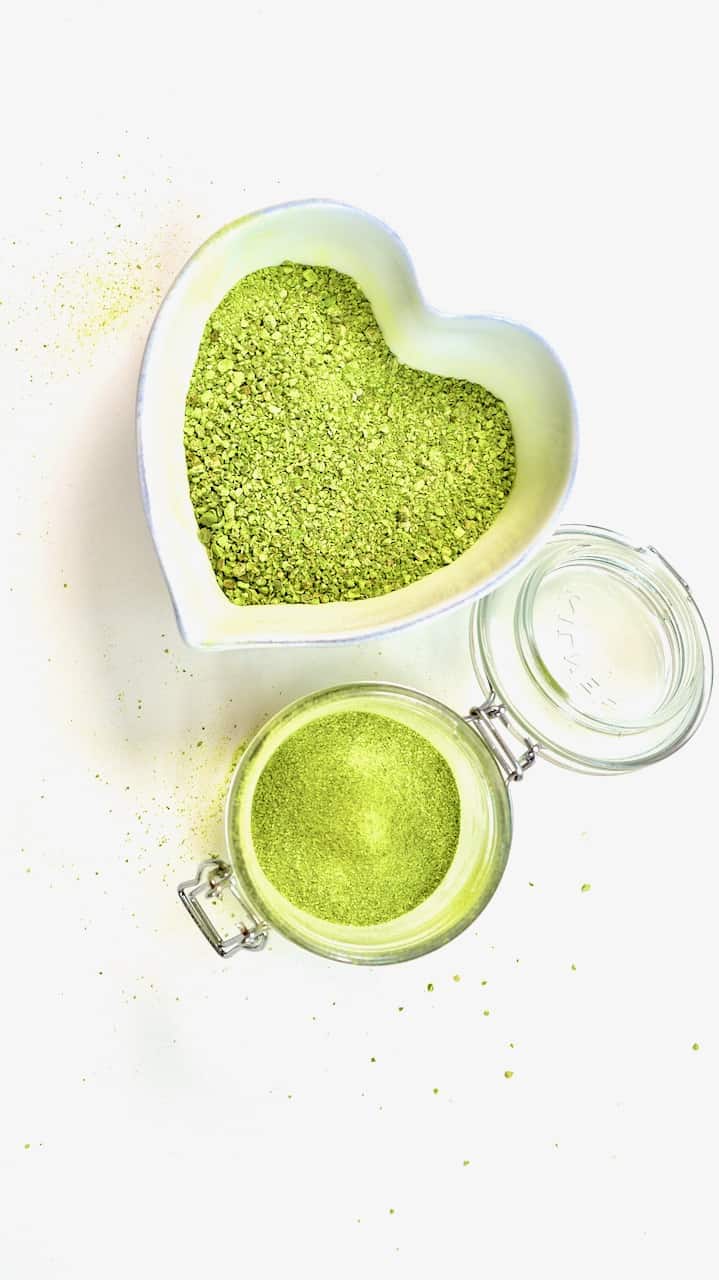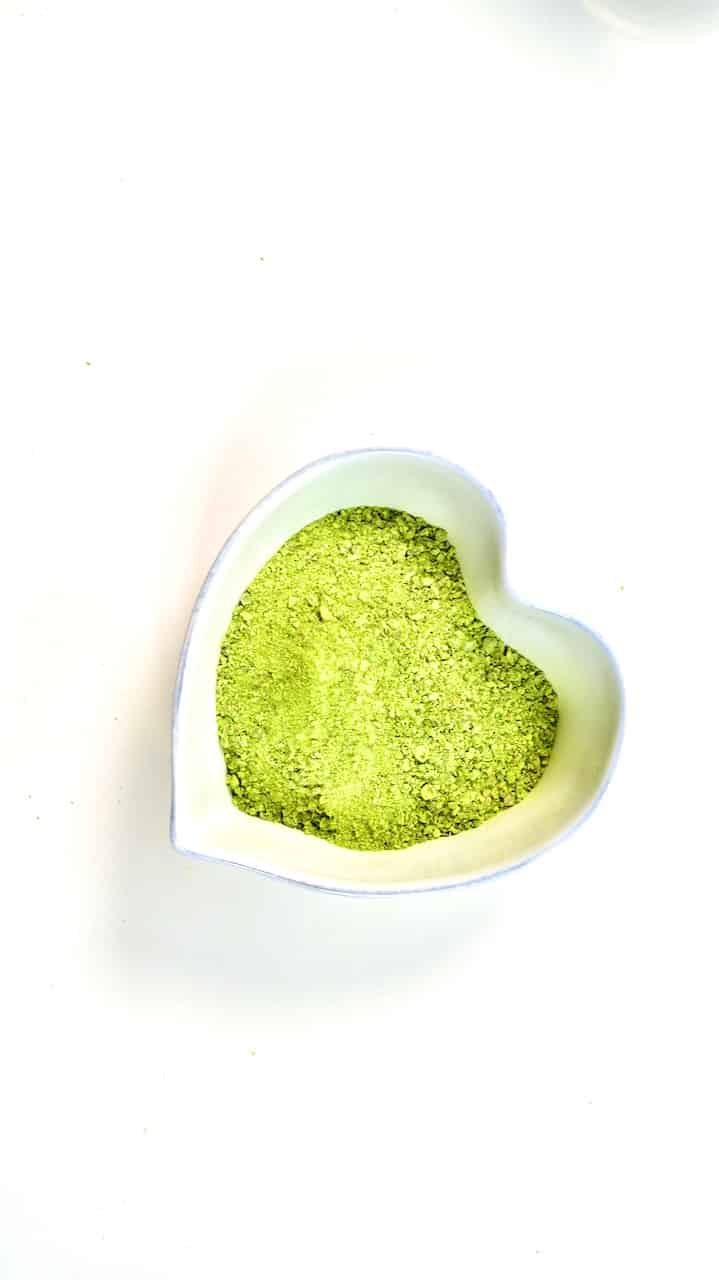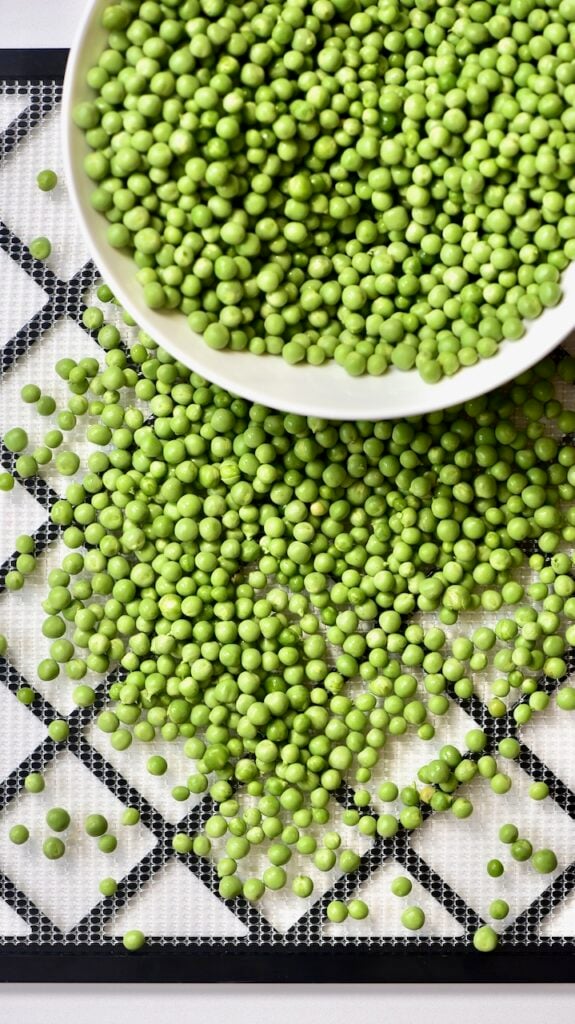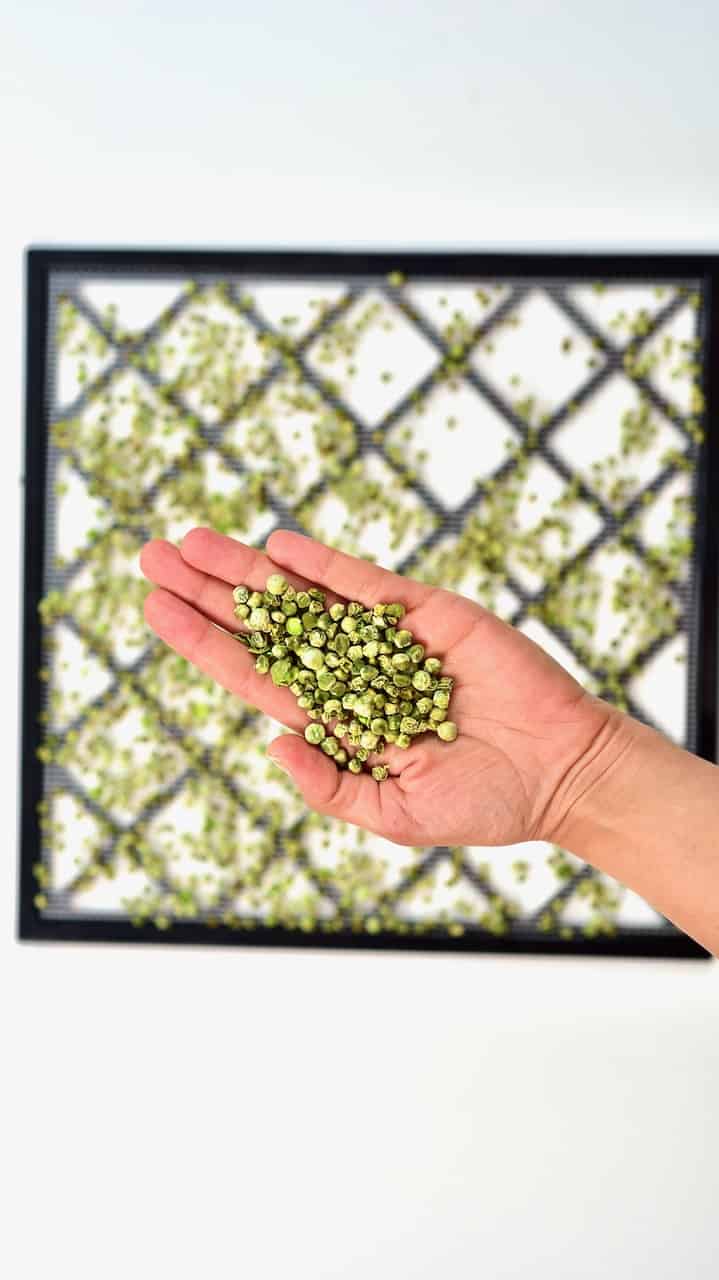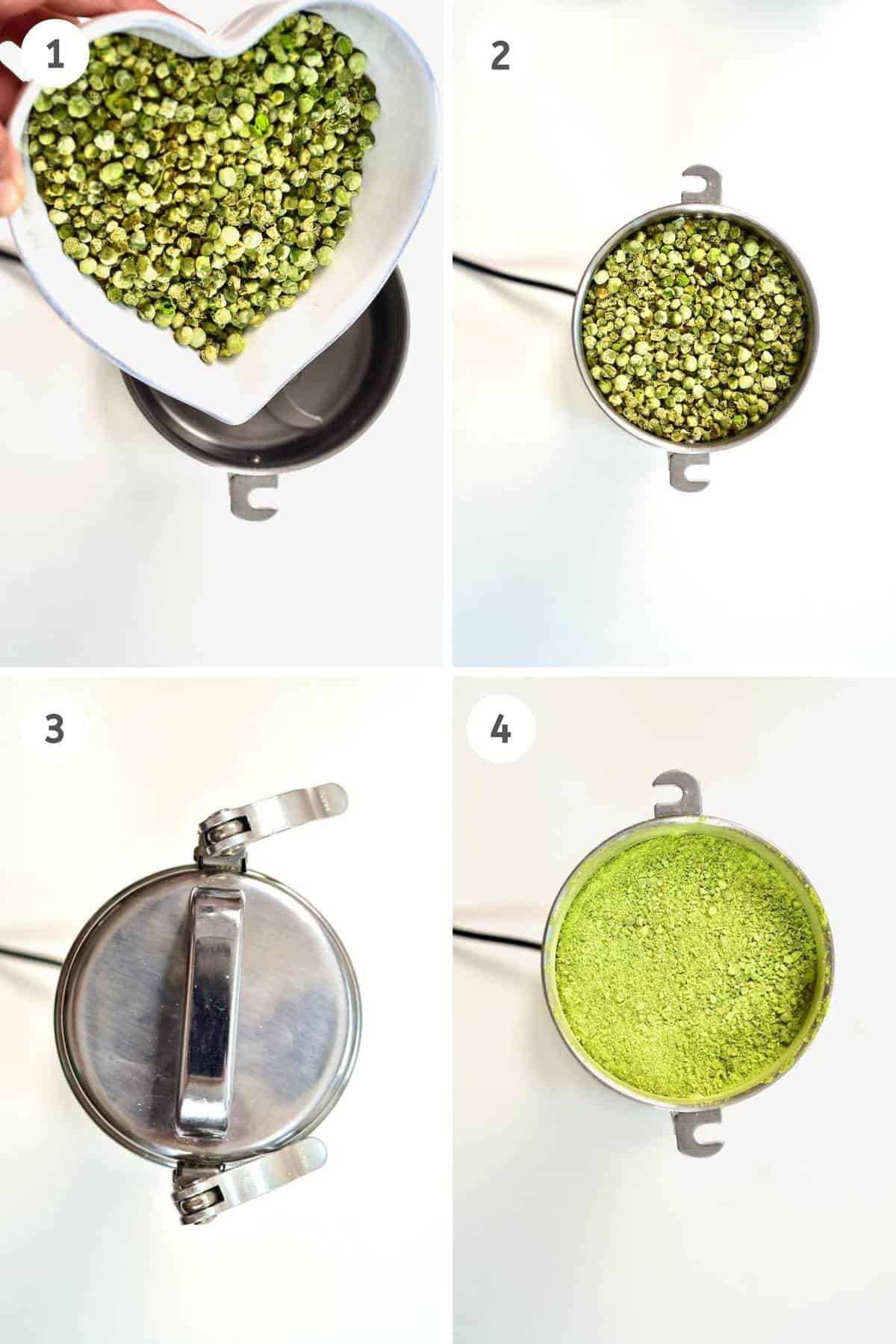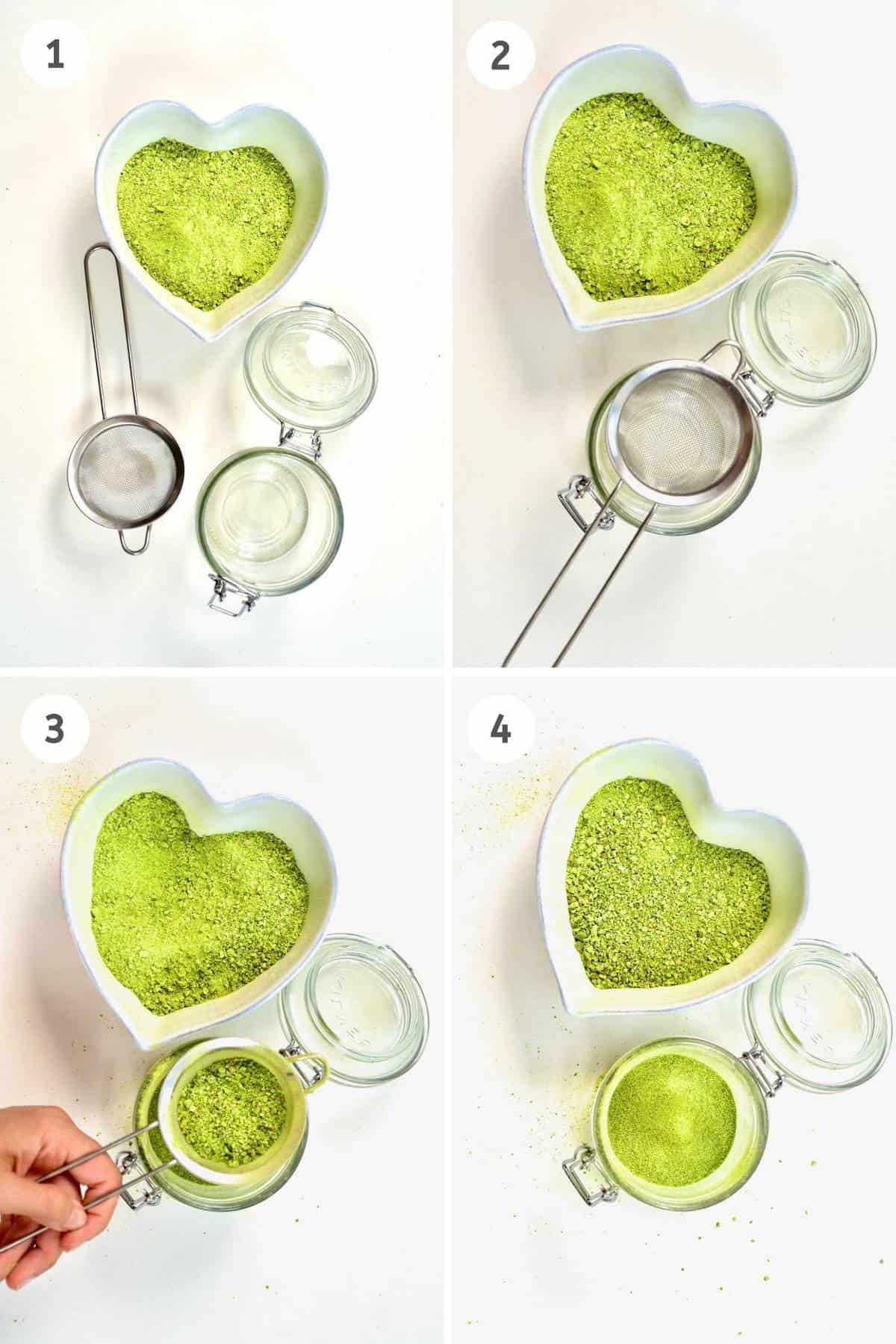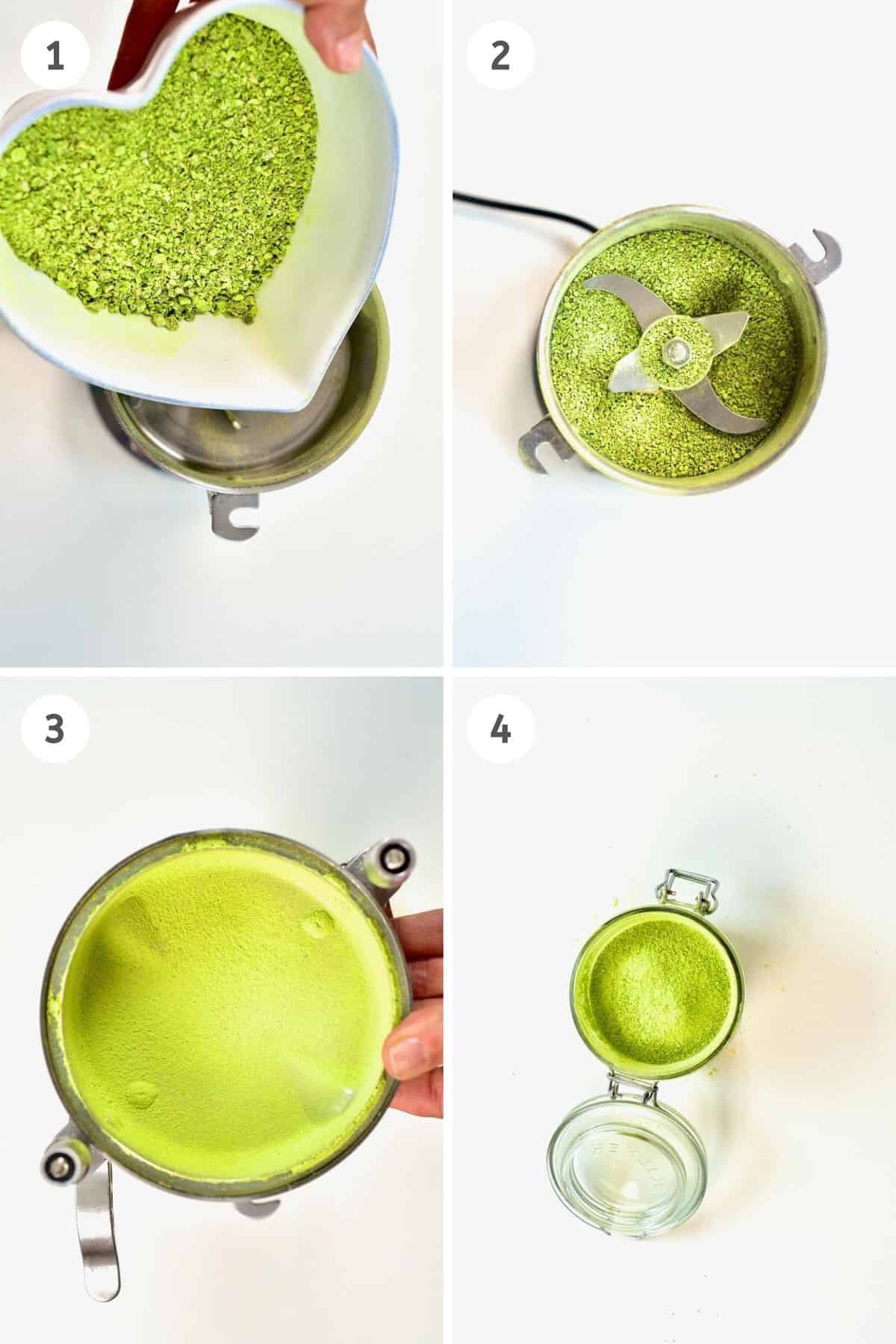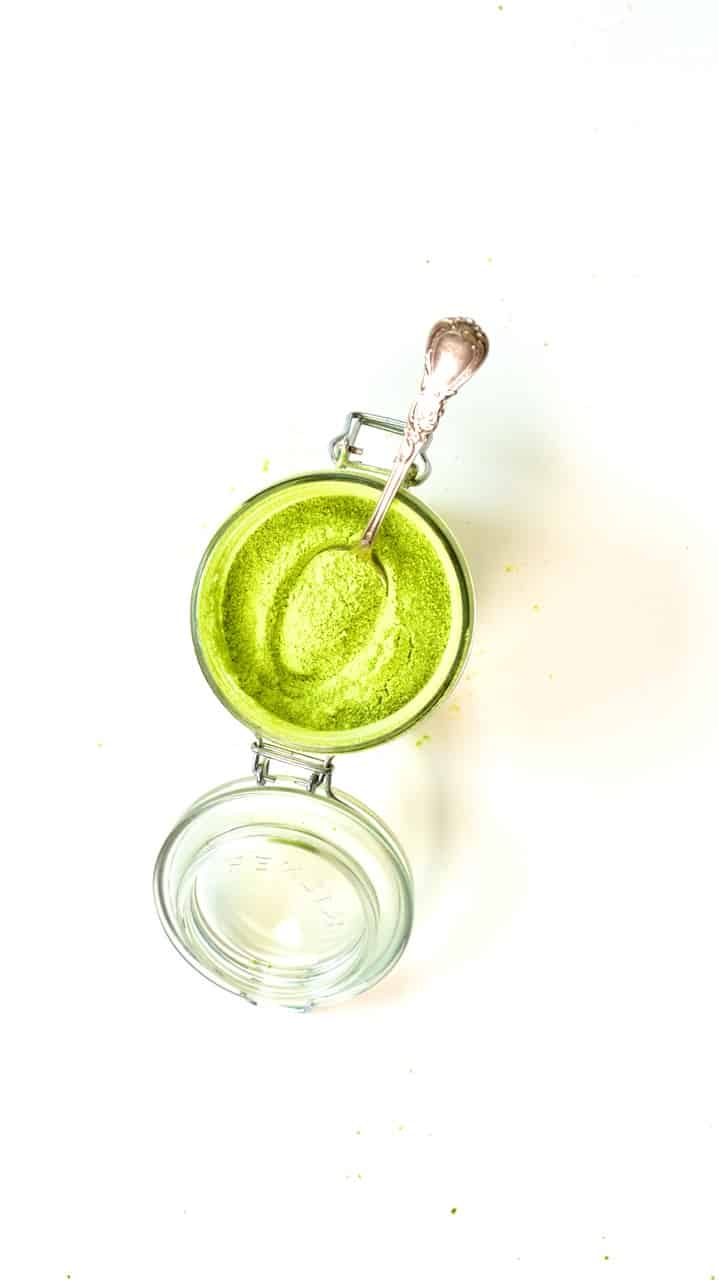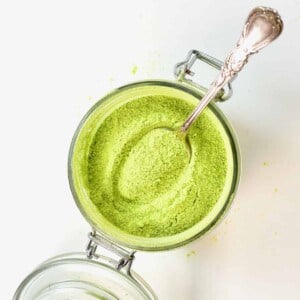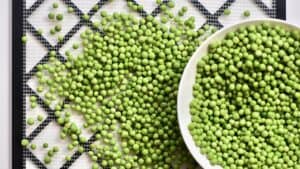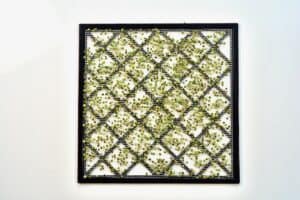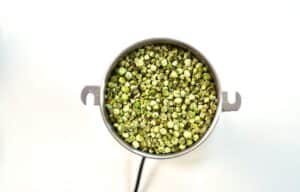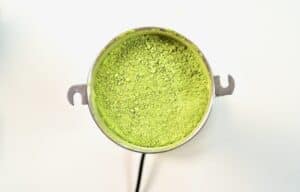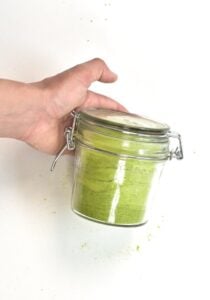Whether you’re looking for a new plant-based protein powder, or want to try this as a flour, pea powder uses dehydrated peas that are then ground into a fine pea flour. With several health benefits and a simple process to make, it’s an excellent option for anyone’s kitchen. Plus, making this product at home is far more cost-effective than buying store-bought! If you are within the vegan food ‘circle’ at all, you’ll probably have noticed a plethora of pea-based products entering the market these last couple of years. That includes meat alternatives, pea protein powder, milks, and more. However, more than that, green pea flour is also delicious in a variety of baked goods, too. In this blog post, I’m going to provide a little look-see into what the health benefits of peas are and pea nutritional information, as well as how to make a super-simple pea powder using dehydrated peas made in either an oven or dehydrator. I’ll also be providing a list of ways that you can then use the resulting powder.
Plus, pea powder is naturally Gluten-free, vegan, dairy-free, and doesn’t contain any of the top 8 food allergens!
Health Benefits Of Peas
Did you know that peas contain pretty much every vitamin and mineral that we need? In addition to being a high-fiber and excellent plant-based protein source?
A 3/4 cup serving of peas contains more protein than a quarter cup of almonds and a fraction of the calories. In fact, according to Healthline, a 170g serving (1/2 Cup) of peas contain just 62 calories, and 4 grams of protein, while providing 34% of your daily Vitamin A, 24% of Vitamin K, and 13% of Vitamin C (just to name a few). While I noticed one source that stated otherwise, as far as I can tell, green peas are also a complete protein, containing all nine essential amino acids needed to be ingested by our bodies, but it low in methionine.
Green peas also contain no cholesterol and are rich in polyphenol antioxidants. Plus, the high protein and fiber levels make them an excellent option for keeping you feeling full for longer, as well as being beneficial to digestive and gut health. Overall, there have been studies linking green peas to a reduced chance of heart disease, with lowered harmful LDL cholesterol levels, reduced likelihood of stroke, and they may have anti-cancer properties and inhibit tumor growth. Plus, their low GI content means they can help control blood sugar levels and can reduce the risk of diabetes.
Side Effects/Negatives:
Green peas are a source of the antinutrients phytic acid and lectins. These can interfere with certain nutrient absorption and can cause some people to experience some digestive upset. Luckily the levels within peas are lower than most other legumes and unlikely to cause you issues unless you are eating them very frequently. If this is something you’re worried about, though, you could also sprout the green peas before making this pea powder. I’ve included the method in my recipe notes.
The Flour Vs. Protein Powder
This post is technically a pea flour and won’t compare to store-bought pea protein powder. This is because pea protein powder is usually made from a pea protein isolate, from either yellow or green peas. This means that they have found a way to isolate the protein within the pea powder specifically, and thus it is highly concentrated. Meanwhile, pea flour in the whole ground peas, containing all of the elements and nutrition of the whole pea. While some may wonder why bother to go to the effort of preparing dehydrated peas to then grind into powder, etc. Pea flour is an ingredient you can easily add to a variety of meals for a healthy protein boost, without any of the nasty additives and sweeteners that many protein powders include. Plus, you can also make flavored varieties too!
How To Make Pea Powder
Pea flour is remarkably simple to make and can be done using either an oven or dehydrator. I’ve also included the bonus information on how to sprout your peas if you want to do that, too (as I know some may). For this recipe, I used fresh peas ‘Garden peas’ (also called English peas, green peas, June peas, etc.). You can use frozen peas that have been thawed, which will likely result in a more vibrant green color. If wanting to sprout the peas first, then you’ll need to begin with dried green peas.
Sprouting:
Sprouting dried peas is a way to make the nutrients more bioavailable and combat the effect of the antinutrients. I usually don’t do this step as peas have lower levels of these antinutrients in comparison to most pulses, like dry beans, anyway. However, if this is something that you’d like to do, then the process is simple. All you need is a sprouting jar or any jar, a piece of cheesecloth or mesh, and a rubber band. The basics of sprouting include soaking the dried peas overnight (between 8-10 hours is best) and then draining the water. Then, you leave them to sprout for 24-48 hours, rinsing and draining them a couple of times during the day. You can see the full process in my Growing Wheatgrass post, as it is identical.
The Method:
Whether or not you have sprouted the peas, the next step is to dry them out. This can be done in an oven or dehydrator and are fairly similar in time. Place the peas on the dehydrator tray or oven tray in a single layer and place in the oven at 60ºC/ 140ºF for 4-5 hours. If your oven doesn’t go as low as that, then you may need to crack open the open door while heating, so that they don’t burn.
They’re ready when they are completely crunchy and hard, with no sign of mushiness.
You can then transfer the peas to a coffee or spice grinder and grind into a powder.
I’ll usually sieve the powder to collect any larger bits.
Then I re-grind the remaining larger bits to obtain a very fine powder.
You can also try to use a powerful blender or food processor, but a spice grinder works best. The Yield: I started with around 1kg of fresh peas and ended up with 200g of pea powder. This is because the peas are 80% water.
Recipe Notes & Variations
You can add this powder into other protein blends like this 5-Seed DIY Vegan Protein Powder / Blend. You can create a very similar result with yellow peas, which many pea protein powders use. If you’re using fresh peas from their pods, many sources will say that the pods need to be discarded. However, I have read some evidence to show that you can remove certain elements of the pod that make it hard to eat. Then proceed with eating them in soups, etc. to reduce waste. You can flavor the green pea flour/powder to use in smoothies. Such as including vanilla and other dried spices, cacao powder, etc.
How To Use Pea Flour/Powder
Add a scoop to smoothies, juices, porridge, and other breakfast bowls/dishes. Can be added to baby food Perfect for adding to soups and stews Will create a batter for lots of savory baking, including bhaji, dhosa, flatbreads, fritters, sauces, etc. Also, it can work for sweet treats such as pancakes, cookies, cakes, muffins, waffles, etc.
If you have any questions, leave a comment below, I’d also really appreciate a recipe rating. Also, If you love this recipe as much as I do, love seeing your recreations, so feel free to tag me on Instagram @AlphaFoodie.
